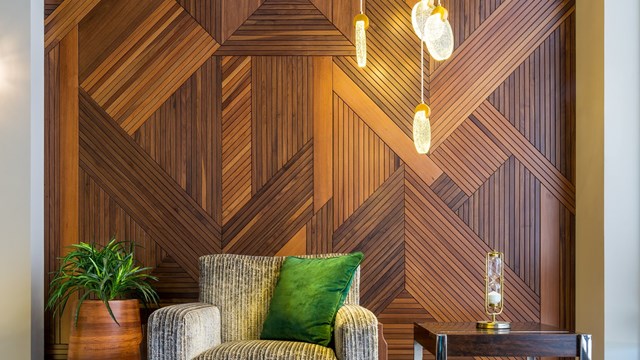
Your kitchen—It's the hearth, the center of your home. You eat there, you drink there, you prepare meals, and even midnight snacks there. It is a gathering place for family and friends and where many of the rituals of daily life occur.
According to Mark Polo of PoloMA Inc., an interior designer based in Fort Lee, "We're returning to a time when the kitchen is again the complete heart of the household." So making your kitchen an attractive and functional space in your home may be worth giving some thought to. If you are able to set aside enough money, renovating your kitchen is one of the best investments you can make in your home—for your daily living comfort as well as to add resale value.
Getting Started
The best way to a successful, economically wise, and time-efficient kitchen renovation is with thorough planning. Proper planning requires looking at the existing conditions of your kitchen and deciding what you like and don't like about it, what you want to change completely, and what might be best left as is. Kitchen design is very subjective—each family has a unique lifestyle, and the variety of activities and the amount of time spent in the kitchen is different for everyone. Before beginning to look at products and prices, you should have a very definite idea of what you want the end result to be in order to meet your specific needs. Stephen Napthali of Kitchen Expressions of Short Hills in Millburn suggests that you should start with the concept, or the overall "look," that you're striving for. Make a wish list of everything you have ever dreamed of for your ideal kitchen and sketch out ideas for possible floor plans.
Greta Goss of Greta Goss Designs in Montclair—a designer known for her innovative kitchen designs—advises that, "An over-designed kitchen dates as quickly as an over-designed outfit.As kitchens take time and money, it's better to be conservative, because it allows for more flexibility in the long term. 'Redecorating' a kitchen is much easier than gutting and redesigning." If you can, avoid making radical changes that may alter major features of the kitchen. However, definitely consider changing things that may be unsafe or poorly designed. It is critically important that major gutting and new installations are coordinated during the design phase to minimize the time that your kitchen will be off-limits. The last thing you want as your project is winding down is to discover that you'll be cooking with a hotplate for another week because you measured incorrectly. Take your time and investigate all possibilities, as the planning stage is the most important part of the process.
During your initial look at the existing kitchen, ask yourself questions and make sure to put your ideas down on paper. Discuss the existing space and layout with the primary users of the kitchen in your household, listing the good and bad points of the design. Investigate traffic patterns through your kitchen. Analyze your daily meal preparation routines and tasks. Does anyone have a hobby or interest that takes place in the kitchen, such as baking? Would you like to entertain more in the kitchen, or use it as a dining area? Has cleaning up after meals become an overwhelming task? If space or money were of no concern, what would your dream kitchen include? Consider topics such as lighting, seating needs, and appliance upgrades. Be thorough in your research about new products and features on the market before consulting with an expert. Combine your notes and rough drawings along with accurate measurements to see how much space you have to work with, and attempt to come up with two or three possible floor plans.
Avoiding Sticker-Shock
Kitchen renovations are not inexpensive, so be prepared! As discussed earlier, renovating your kitchen is usually the most cost-effective way to upgrade your home, however you should consider the extent of what is worthwhile for you to spend. If you are remodeling your kitchen as a facelift prior to selling, it's wise not to spend more than 10 to 15 percent of the cost of your home. However, if you are planning on living there for at least five years or more, you can spend 25 percent or more, since you will most likely recuperate the entire cost of the renovation when you sell. If you don't have the money now, start saving—it's definitely worth the wait for a job well done. Whether you are looking for a state-of-the-art overhaul or a budget facelift, you should expect to spend:
• $2,000 to $3,000 for a cosmetic facelift (no new cabinets, plumbing or electrical changes, but possibly new cabinet doors, hardware, faucets, and fixtures).
• $4,000 to $7,000 for new low-end cabinetry, counters, and appliances (a few structural changes are possible, but this is basically "doing it cheap.")
• $8,000 to $10,000 for new low-end cabinetry, counters, appliances, flooring, and paint (some minor structural changes and upgrades available).
• $11,000 to $20,000 for all of the above in medium quality (more elaborate structural changes, and some custom work).
• $20,000 and up for all of the above in high quality (with custom work and many upgrades).
If you're a smart shopper and do thorough research, there are ways to cut costs without sacrificing quality. Although you may be inclined to do a budget job on some aspects of the renovation, make sure you don't skimp on design, appliances, or labor, which are the basis for a functional kitchen. Instead, to cut costs experts suggest using stock cabinets instead of custom work, laminates instead of Corian, and keeping as many of your current appliances as you can. Try to keep existing plumbing and electrical fixtures rather than focusing on structural changes; make the most of smaller improvements like new paint, wallpaper, curtains, and decorations.
Design Considerations
Today's kitchen has to be bright and appear large, while still being functional in order to adapt to the many activities that now transpire there. Two general design "rules" that apply to every kitchen are color and illumination. Goss says that many people want to redo their kitchens because they are too dark due to inappropriate color choices in cabinets, counter tops and flooring, or due to inadequate lighting. Lighter colored or natural wood cabinets tend to brighten and visually enlarge a given space. Natural and artificial light, including area and task lighting, are extremely important to enhance space and make a kitchen seem roomier. Goss suggests that, "Attractive kitchens have windows placed in the areas that offer the best view available.If that's not possible, pressed glass introduces light, but eliminates the view. So does a plain or patterned, white, flat, semi-sheer window treatment."
Polo finds that the main reason most people decide to redo their kitchens is because the kitchen is not functioning according to their wishes due to equipment placement or old equipment, the size of appliances and furniture in the space given, or storage space, etc. According to Napthali, the main design objectives for renovating your kitchen involve the arrangement of the parts of the kitchen within the confines of the space you have to work with so that the functionality and utility can be achieved as well as the aesthetically-pleasing "look" that you desire.
There are many styles of kitchen layouts including the "L" shaped kitchen, the galley, the "U" shaped or with a center island, but be careful, as some layouts can cause traffic problems without the proper space. In order to best judge the use of space, most kitchen designers use what they call a "work triangle," or the triangle formed by the distance from the refrigerator to the stove to the sink and back to the fridge again. A good guideline to use is: the sum of the legs of the work triangle in any style kitchen should not be less than 10 feet and not greater than 25 feet. If the work triangle is too small, people will most likely be tripping over each other, while, on the other hand, if it is too large, food preparation could become an exhausting task. You want to be comfortable with your layout in the space you have to work with.
Furniture & Appliances
According to Polo, kitchen design has changed over the last few decades because we are opening up to a wider array of styles. "We're seeing more fine furniture, cupboards, bright colors, stripes, plaids, more of a '70s influence, a sleeker look, marrying tradition and contemporary for cleaner lines." He says modern kitchen renovations are exploring the use of different materials; whereas 50 years ago, kitchens were composed mostly of marble, tile and Formica. Today's kitchens are making use of new materials such as granites, woods, stone, acrylics, concrete, copper and stainless steel.
Napthali notes that today's appliances are now offered in a wide range of colors and are much more sophisticated and technologically advanced than their predecessors. According to Napthali, many modern kitchens are trending towards professional appliances and brands such as Viking, Thermador, Décor, Miele, and Bosch, many of which have a sleeker, more industrial appearance and hard-wearing, user-friendly utility. Some of the latest trends in appliances include: the pullout, "drawer" style dishwasher, pizza ovens and bread ovens, different types of coffee makers, and built-in wine coolers. Modern furniture styles include: sleeker cabinets, new door styles, and exotic decorative additions such as Japanese wood veneers. Polo has also noticed new trends in maximizing counter space, such as using bar stools to add an extra eating and entertaining surface or for families with multiple adults and children. This is also a more efficient use of space for smaller kitchens where there's not enough room for a full kitchen table and chair set-up.
General industry guidelines for appliance dimensions are a good way to get a rough idea of how much space you need. Most refrigerators require an area 33 inches wide for proper installation while a 31-inch space is allotted for stove installation, leaving you one-half-inch on each side of the appliance so that it can be easily removed and replaced during cleaning or repair. Countertops should generally be two to three inches below the elbow, or approximately 36 inches high, and wall cabinets are usually placed 15 to 20 inches above the countertops. When installing kitchen cabinets, it is important to consider counter height, the space between the lower and upper cabinets, cabinet depth, and the space needed to properly fit a refrigerator and a stove. You absolutely must check the dimensions of your existing appliances (height, width, and depth) in order to plan what to buy to fit into the available space before building.
Know Your Experts
According to Polo, "it is harder to make your visual goals become reality without an expert to help with the overall design." He feels that the best way to achieve an attractive, efficient kitchen is to hire a head interior designer for the overall perspective (how does your kitchen style mesh with the rest of the house?), and a kitchen specialist who can integrate space or design considerations from other rooms into a working space in your kitchen. Napthali agrees, adding that one of the biggest blunders homeowners commit when attempting to renovate their kitchen is not assembling a qualified team of experts to do the project, but rather trying to "do it yourself." Napthali suggests starting by hiring a kitchen designer, followed by compiling a team of professional contractors, appliance manufacturers, cabinet makers, etc. Many self-proclaimed kitchen design experts may have passed a Kitchen Designer certification program, which is a good way to judge credentials. However, like all specialized trades, knowledge comes from learning through experience, so check out their portfolios of past work.
In order to become more of an expert yourself, read books, attend seminars and training programs, and check out every kitchen you see for ideas and techniques. Whether you're looking to spruce up the existing design or preparing for a compete overhaul, renovating your kitchen will prove to be one of the most worthwhile home improvements you can invest your time and money in—a major change that you and your family will be able to enjoy every day.
Heather Higle is a freelance writer living in northern New Jersey.






Leave a Comment